Some technicians dread being assigned a car with an EVAP code. If you’re uncertain how the various types of EVAP systems work, it’s easy to get confused during a diagnosis. Even hard-code faults can sometimes seem difficult to nail down, but when the problem is intermittent or temperature-dependent, these codes can seem like a real nightmare.
This is Part One of a two-part series on how to diagnose evaporative emissions systems. It starts with an overview of the Nissan/Infiniti evaporative emissions system logic, then discusses leak testing and best repair practices. Part Two will focus on specific EVAP system faults.
After reading this series, you’ll be on your way to becoming a fearless conqueror of EVAP maladies, rather than a finger-crossing gas cap tightener who hopes that the car will be assigned to someone else when it comes back. If you are already an EVAP pro, you may still be able to pick up a useful tip or two, so read on.
What is EVAP?
The evaporative emission control system (EVAP) is designed to reduce the amount of fuel vapor that escapes from the fuel tank while the car is in use or parked.
The fuel tank must be vented. Without a vent, the tank would over-pressurize due to thermal expansion, and draw into a vacuum and collapse as the engine used fuel.
Before EVAP systems were introduced in 1971, the tank was vented directly to the atmosphere, which avoided the pressure and vacuum issues, but allowed fuel vapors to escape into the atmosphere where they can combine with oxides of nitrogen and create ground-level ozone. This compound can damage lungs and aggravate respiratory conditions.
What’s been done?
Evaporative emissions account for a large percentage of the total HC vehicles emit. Therefore, reducing evaporative emissions has been of some concern for Nissan/Infiniti for decades. The company has made many improvements to its EVAP systems over the years. What was once a very simple system has grown in efficacy and complexity. In the 1970s, Nissan (no Infiniti division yet) used a basic system with a charcoal canister to store vapors from the fuel tank and carburetor (remember them?) float bowl. When the engine is running, fuel vapors are purged from the canister and burned by the engine. There is no facility for monitoring whether or not the EVAP system is working, and no feedback control of the purge flow.
In the early 1990s, Nissan/Infiniti added an EVAP and EGR control solenoid valve to prevent EVAP purge and EGR flow under certain conditions. The self-diagnostic system was not able to detect any EVAP system faults. In the mid-1990s, Nissan/Infiniti added purge control to more accurately manage the burning of stored vapors. This was accomplished by adding an EVAP canister purge control solenoid valve to regulate the flow of fuel vapor into to intake while the throttle is open. The only detectable fault is an open or short in the canister purge control solenoid valve circuit.
Around the turn of the century, Nissan/Infiniti gave its EVAP systems a complete makeover. Many major changes were made over the space of just a few years, and a number of new components were added to the systems.
Use Figure 1 and the component descriptions that follow to familiarize yourself with the type of EVAP system you’ll most likely encounter in the service bay. Today’s EVAP systems resemble one another more than they differ. Sorting out any peculiarities is easy when you have a good grasp of the basics, so having an idea of how this example system should work – even before you crack a book or open a hood – will save you a lot of time.
Components
Nissan/Infiniti usually calls the purge valve the “EVAP Canister Purge Volume Control Solenoid Valve,” which is an extremely accurate name, but quite a mouthful. The purge valve regulates the flow of fuel vapors from the canister into the intake manifold. It also provides vacuum for OBD II leak testing. The valve is duty-cycle controlled by the PCM, so it does more than just allow or block flow; it regulates the flow based on feedback from the oxygen sensor. You’ll almost always find the purge valve mounted close to the intake manifold.
The fuel tank pressure sensor is a pressure/vacuum transducer. It’s similar to a MAP sensor, but can respond to much smaller changes in pressure. The sensor has three wires. Two are for 5V reference and ground; the third is the signal output. Its output is a voltage that will change as the pressure changes. The pressure sensor can be located on the fuel tank, but most often it is found in the purge line between canister and the purge valve.
The EVAP canister is typically a plastic box with three ports. The canister is packed with very fine charcoal powder. Its exposed surface area is substantial enough to absorb a fair amount of hydrocarbons before it becomes saturated. When fuel vapors are forced from the tank by thermal expansion, they’re routed through the canister where the charcoal absorbs the hydrocarbons. Only fresh air is allowed to escape into the atmosphere. Once the engine is running, air is routed through the canister and into the intake manifold, which strips the HCs from the charcoal and carries them into the engine where they’re burned as fuel.
The canister vent valve is an ON/OFF solenoid valve controlled by the PCM. It goes by a lot of names and abbreviations. Nissan/Infiniti usually calls it a “Canister Vent Control Valve” in the manuals, but your scan tool may call it by another name. Regardless, the vent valve always functions the same way. When active, the valve closes to seal the canister vent, thereby shutting the EVAP system off from the atmosphere. The only time the PCM closes the canister vent is during OBD II EVAP system self-testing; the rest of the time there’s no voltage applied, which allows air to flow though the canister. You’ll almost always find this valve bolted directly to the canister.
The water separator is a plastic tank with baffles inside, designed to keep water (from puddles, etc.) out of the canister. If the charcoal in the canister is waterlogged, it cannot absorb HCs. A badly saturated canister can also become clogged. The water separator has no moving or wearing parts, so it’s not a high failure item. However, sometimes bugs build nests inside the water separator, which can cause symptoms similar to a stuck-closed canister vent or a clogged canister.
The vacuum cut valve is not electronic. It’s a mechanical check valve that only allows flow in one direction. Its purpose is to prevent vacuum in the purge line from reaching the fuel tank. It is always located in the line between the fuel tank and the canister.
The vacuum cut valve bypass valve is an ON/OFF solenoid valve controlled by the PCM. It’s mounted in parallel with the vacuum cut valve. Its purpose is to bypass the vacuum cut valve during EVAP self testing, which makes perfect sense when you think about it – if the vacuum cut valve’s job is to block vacuum to the tank, how else could a vacuum be applied to the tank during testing? The bypass valve can be easily identified because the vacuum cut valve is always right next to it.
Other players
- Fuel cap: Laugh if you must, but this is a critical component! Did you know there are calibrated pressure and vacuum reliefs built into the fuel cap? Choosing the proper cap is very important. Just because it fits, doesn’t mean    it’s right. Buying from Nissan or Infiniti by VIN is the best way to avoid headaches.
- Fuel Tank Temperature Sensor: This is a thermistor, just like a coolant temperature sensor. Not all Nissan and Infiniti cars have fuel tank temperature sensors. Its primary purpose is as an input for Engine Off Natural Vacuum (EONV) testing, where the PCM uses the naturally-occurring pressure changes in a closed chamber – in this case the fuel tank – to determine whether the system is well sealed.
- Fuel Level Sensor:Â On some vehicles, the fuel tank level sensor provides additional input to the PCM for EVAP testing.
The efficacy and reliability of Nissan/Infiniti’s EVAP systems have greatly improved over time. In spite of this, EVAP system repairs are on the rise, but only because 10-year-old cars with 10-year-old rubber components are capable of detecting tiny leaks, whereas a 13-year-old car (pre-OBD II) wouldn’t know if you left the gas cap off entirely. If the measure of an EVAP system’s efficacy is its ability to reduce evaporative emissions, then Nissan/Infiniti’s current systems are better than ever, which is a good thing for everyone who breathes air, as well as techs who know how to fix them.
So, you found an EVAP code. What’s next?
The first step, no matter what code you find, should be to copy or print the freeze frame data (Figure 9), then note any information you find in it that might help your diagnosis.
You might also want to collect the Mode 6 data for the EVAP monitor before clearing the codes. This data can be used after the repairs are complete to determine how much improvement the repair caused, rather than just a pass/fail on the monitor status.
If you have a Consult II, clear the code then use the DTC confirmation procedure (Figure 10) to verify the problem is still present. If you don’t have a Consult II, you are probably better off just jumping into diagnosis. It will likely take at least 20 minutes to get the EVAP monitor to run; your time will likely be better spent following the diagnostic procedures for the stored code.
Finally, before you spend a bunch of time, do yourself a favor: Check for TSBs. Some EVAP problems are well known and documented. A relevant TSB for your code may lead you straight to the cause of the trouble. Some EVAP problems might be nearly impossible to fix without engineering help.
Even if you don’t have a Nissan/Infiniti Techinfo subscription, you can read through the TSB descriptions for free (Figure 11). Just visit the Nissan/Infiniti Service Information website (http://www.nissan-techinfo.com), or the Infiniti Service Information website (http://www.infiniti-techinfo.com).
If you find a relevant TSB, paying for a one-day subscription may save you hours of diagnostic work. Unlike many aftermarket information services that are updated on a quarterly basis, Nissan/Infiniti Techinfo always has the latest and most accurate information available.
Testing for EVAP leaks
You may have noticed that Nissan/Infiniti recommends using a hand-held pump, low-pressure gauge, and an ultrasonic leak detector for EVAP leak detection. However, since most independent shops do not own an ultrasonic leak detector, this article will focus on using smoke machines, which are becoming common.
It is extremely important to use a smoke machine that regulates pressure to 0.5 psi (14 inches of water). If pressure exceeds 0.6 psi (Figure 12), it may damage EVAP system components and produce invalid findings. Many types of smoke machines exceed this pressure, and are not suited for EVAP testing. In addition, some types of smoke machines use a glow plug than can ignite fuel vapor if any is allowed to flow back from a pressurized EVAP system into the smoke machine.
Some auto manufactures that recommend smoke machines for EVAP diagnosis also recommend using nitrogen instead of pressure-regulated shop air. Nitrogen is an inert gas, so a combination of fuel vapor and nitrogen will not ignite.
However, using nitrogen does not eliminate the need for common sense, nor does it make it impossible for you to burn your customer’s car and your shop to the ground. Whether using shop air or nitrogen in the smoke machine, vapors escaping from the EVAP system will mix with air and become combustible. Always post “Inflammable†signs in your work area when doing EVAP work, and keep potential sources of ignition away from fuel vapors.
Service port
Most modern Nissan and Infiniti cars have an EVAP service port (Figure 13). The port has a green cap, and can be found near the purge valve, somewhere near the intake manifold. The EVAP service port has a high-flow Schrader valve, similar to those found on A/C systems, but with one important difference: The EVAP service port valve core has reverse threads; it must be spun clockwise for removal, and counter-clockwise for installation. If you didn’t read that last sentence, replacement service ports are available from your Nissan or Infiniti dealer.
In order to use the service port for testing, the valve core must be removed. Typically, smoke machines designed for EVAP testing come with an adaptor to connect to the port.
Leak check, then smoke
Before filling the system with smoke, it’s a good idea to do a quick leak check as follows:
- Close the canister vent control valve using a scan tool.
- Apply 0.5 PSI using the smoke machine without smoke.
- Monitor the flow gauge. If there are no leaks, the ball should settle at the bottom of the gauge after the system fills. If the ball continues to float, the system has a leak.
Once the smoke machine is hooked up and pumping smoke into the service port, it will take a while to displace the air in the EVAP system. Many smoke machine manufacturers recommend removing the gas cap to allow trapped air to escape faster, then replacing the cap once smoke comes out of the filler neck. However, if you disturb the gas cap, and it wasn’t fully tight or its gasket seals only intermittently, you’ll have removed the cause of the problem without knowing it.
A better way to let the air escape is to open the canister vent. If the canister vent is still being held closed from the leak check, you’ll need to open it with the scan tool. The canister vent close valve is normally open, so if you didn’t close it during the leak check, it will already be open.
There are two advantages to this technique:
- It leaves the system as found, without disturbing the cap.
- Fuel vapors are vented through the canister, reducing the amount of explosive vapor that is pumped into your shop.
Once the system is full of smoke, you’ll be able to see it escaping from the leak. Using a very bright light will make the smoke much easier to see. Just follow the purge line from the purge volume control solenoid valve to the canister, then from the canister to the by-pass valve and vacuum cut valve and on to the tank and filler neck.
Some leaks are affected by temperature changes. If you can’t find a leak on your first try, it might be a good idea to let the car sit overnight and check it first thing in the morning. Your customer may not be happy about leaving the car overnight, but he or she will likely be more upset if the car must return several times to figure out what the problem is.
Repair it right
Very small EVAP leaks can cause very big headaches. Why add to someone’s future frustration (maybe yours!) by using incorrect or sub-standard parts? It may occasionally seem like a good idea to replace a defective section of purge hose with some bulk fuel line and a couple of screw clamps to avoid waiting for parts to arrive from your Nissan or Infiniti dealer. But when the repair starts to leak later, it won’t seem so wise. Here are a few tips to avoid comebacks and embarrassment:
- Lubricate EVAP O-rings with mineral oil, Nissan/Infiniti part number 999MP-AJ000. This is not just for lubrication on installation; it also improves the seal.
- Use Genuine Nissan/Infiniti EVAP hose with the proper constant-tension clamps to avoid future temperature-dependent leaks.
- Use Nissan/Infiniti fuel caps, ordered by VIN. Some fuel caps look the same, but are in fact different.
- Replace the canister vent valve O-ring any time the canister vent valve is removed.
Completing the monitors
After diagnosis and repair, you could deliver the car to the customer with the trouble codes cleared and the System Readiness Tests (SRT), or Monitors, incomplete, and it would probably be okay. But what if you made an error in diagnosis, or a hose disturbed during service is now leaking? The only way to check your repair work is to verify that the EVAP monitor completes successfully. There are two ways to cause the monitors to run.
One way is to drive the car in a way that meets certain criteria necessary for the monitor to run. This is known as a “drive cycle.†Drive cycles vary from car to car, so to find the exact procedure, you’ll need to check http://www.nissan-techinfo.com or http://www.infiniti-techinfo.com.
The typical drive cycle begins with a cold engine, idled until warm, then driven alternately between periods of steady 55-60 mph driving and idling. Many techs find that using a dynamometer to complete the drive cycle makes completing the SRTs easier, since traffic and road conditions make adhering to the drive cycle pattern difficult. However, even with a dynamometer, completing the drive cycle can be time-consuming.
An easier way to cause the EVAP monitor to run is to use the DTC confirmation procedure available on the Consult II/III (Figure 14). This allows a single SRT to run without completing a drive cycle. Availability and procedure vary from car to car, so consult service information for specifics. In general, 1999 and newer Nissan and Infiniti vehicles will have DTC confirmation procedures available to speed clearing EVAP monitors.
Use what you’ve learned
If you weren’t very familiar with EVAP systems, you now have some new things to try the next time you’re assigned a Nissan or Infiniti with an EVAP code. Better yet, play around with a known-good car the next time you have some free time. A few moments borrowed from your boss to improve your knowledge of how a car should work will surely be repaid with faster diagnosis the next time you encounter a car that isn’t working as it should.



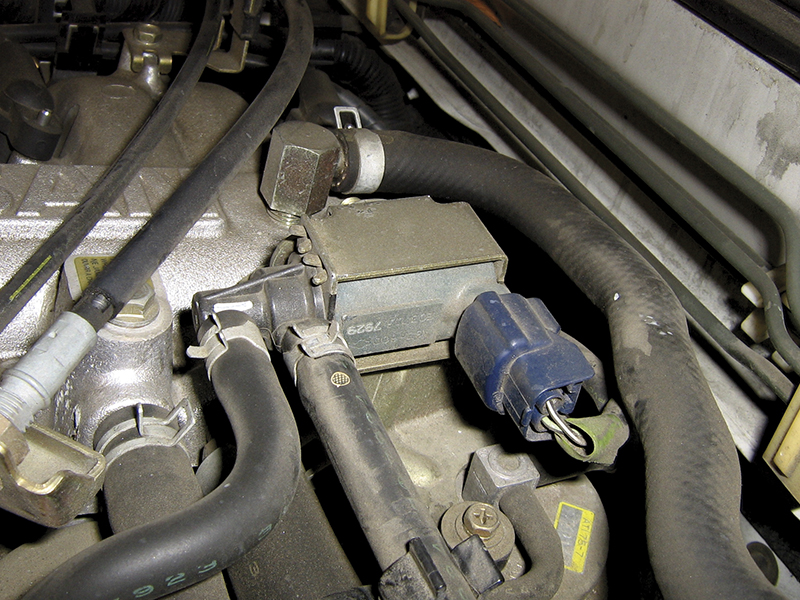
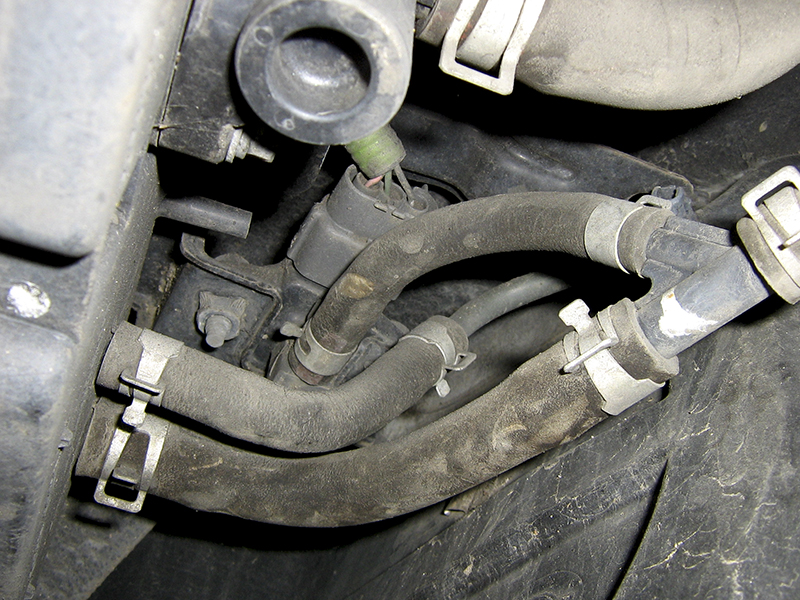

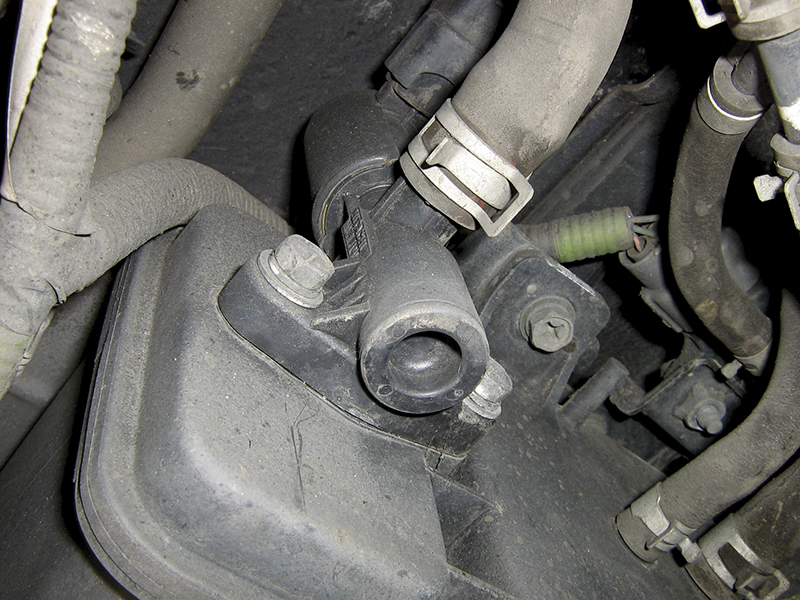
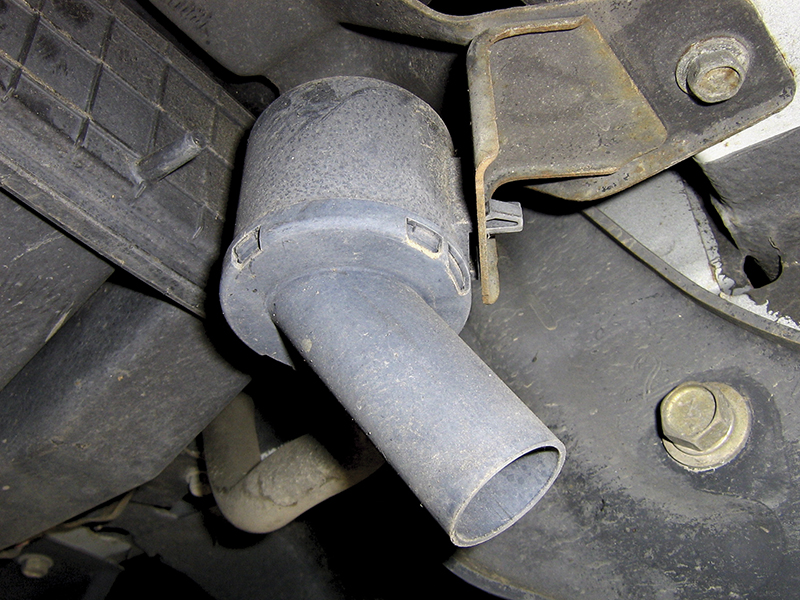
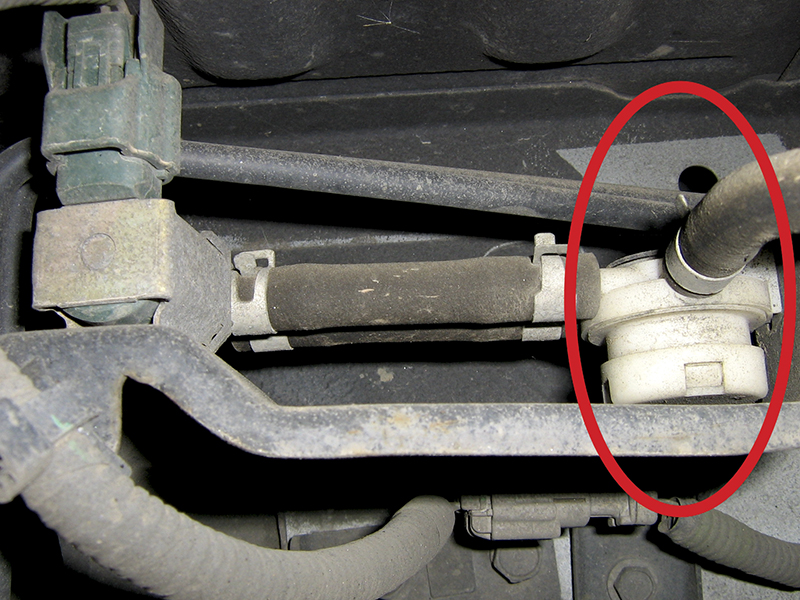

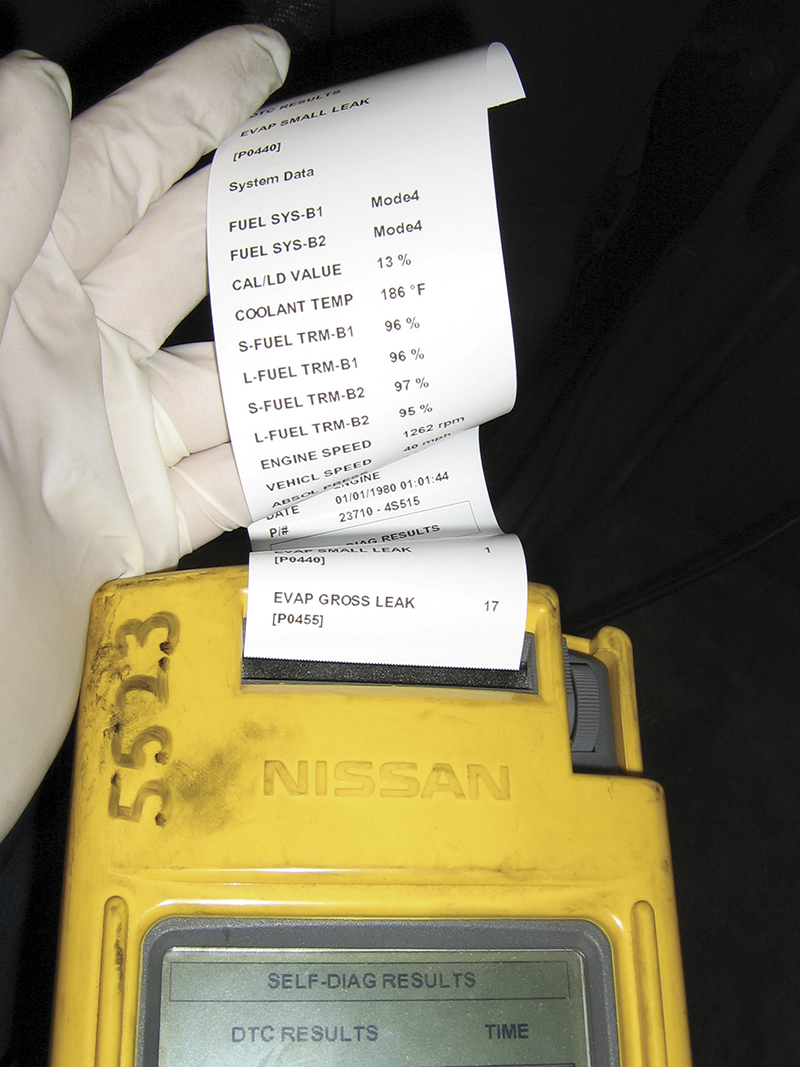

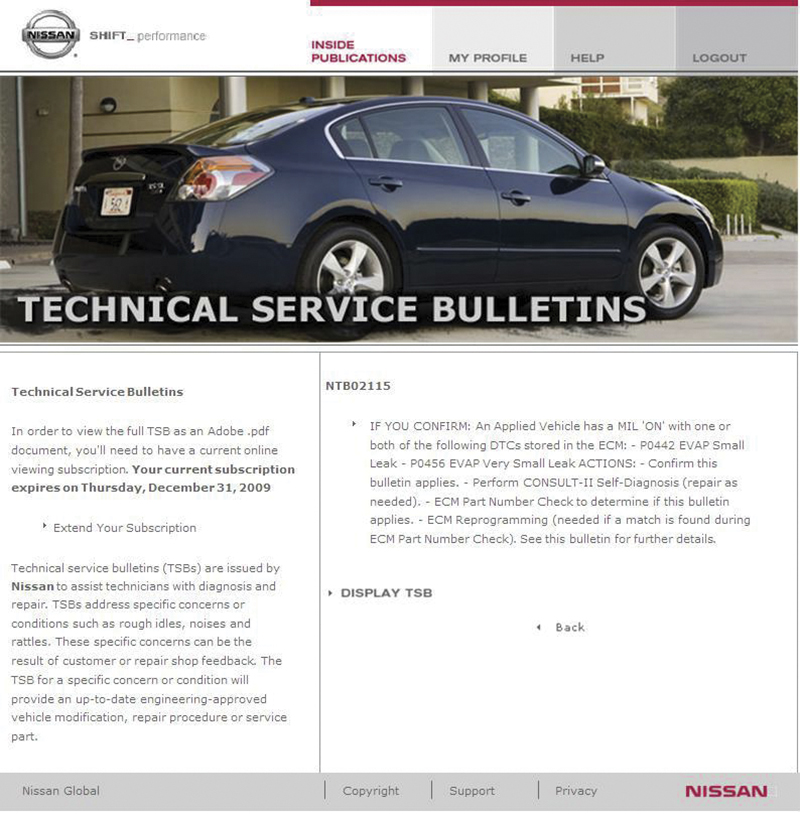
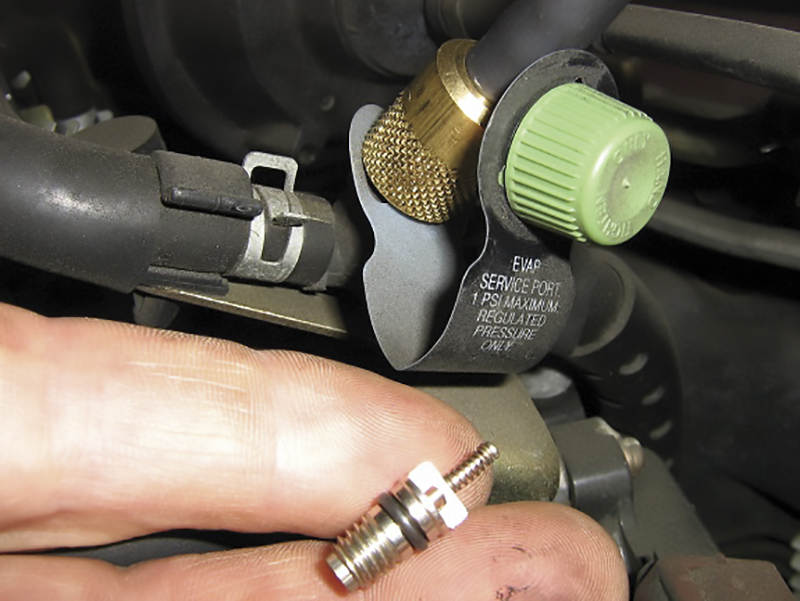
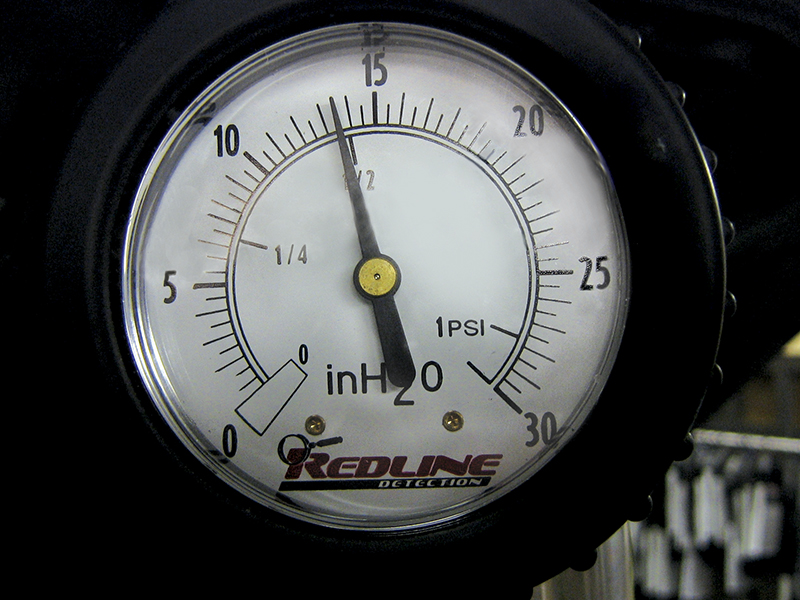
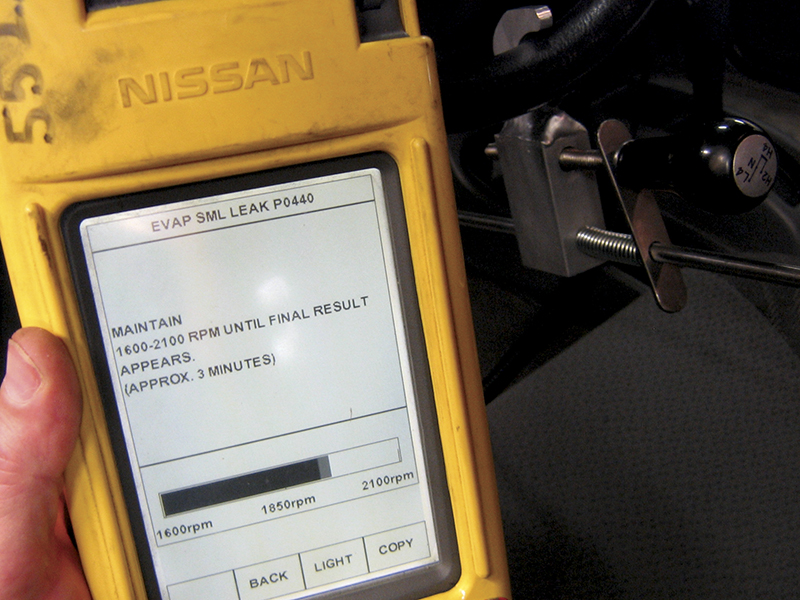




0 Comments